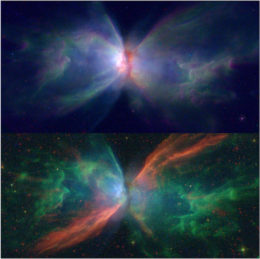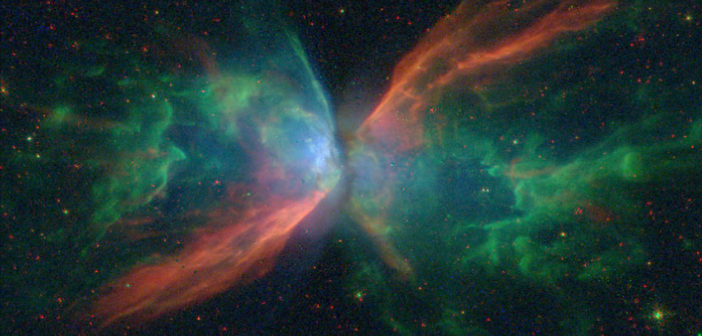
Two composite images of NGC 6302 constructed from Hubble data. The top panel is composed of narrowband images centered on emission lines of hydrogen (red), oxygen (green), and neon (blue), while the colors in the bottom panel show emission from iron (red), sulfur (green), and neon (blue). Click for full-size image. [Kastner et al. 2022]
The representative-color images above and to the right showcase the intricate structures in planetary nebula NGC 6302, known as “the Butterfly.” Planetary nebulae are shells of gas and dust that are lofted into space at the end of a 0.8–8 solar-mass star’s life, set aglow by ultraviolet rays from the star as it evolves into a white dwarf. A team led by Joel Kastner (Rochester Institute of Technology) has used Hubble data to explore the structures in NGC 6302. The new images reveal clumps, knots, and filaments of gas, as well as evidence of shocks generated by fast-flowing winds from the central star. NGC 6302’s central star has been hard to track down: these new observations reveal that the previously identified central star is in fact not associated with the nebula at all! What’s more, some models suggest that bilobed planetary nebulae can only arise if the central star has a binary companion, no hint of which has been found yet for NGC 6302. Clearly, planetary nebulae represent a challenge for modelers and observers alike! For more information on the latest investigation of this intriguing object, check out the full article below.
Citation
“Panchromatic HST/WFC3 Imaging Studies of Young, Rapidly Evolving Planetary Nebulae. I. NGC 6302,” Joel H. Kastner et al 2022 ApJ 927 100. doi:10.3847/1538-4357/ac51cd

